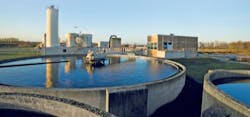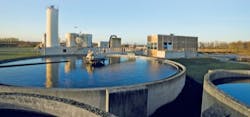Exhibitor promotion: Kemira
Prevention of Struvite Deposition in AD Systems
There are numerous strategies to control struvite deposition depending on your specific plant setup. Choosing the right one can help you get the most out of your process: safe, cost-efficient and continuous operation. Increasing awareness of global warming and rising energy prices have led to a growing interest in renewable energy during recent years. Biogas is a fuel with many advantages. Using the process of anaerobic digestion, it can be produced from a variety of substrates, preferably from different types of wastes.
The technique is widely used in wastewater treatment plants (WWTPs) for reducing the waste volume and stabilising the sludge produced from wastewater treatment. The process can also be applied to treat household and agricultural waste, turning these into valuable resources and solving a waste handling problem. The residues from the digestion process can also be used as fertilizer on farmland.
Anaerobic digestion of wastewater sludge results in a transfer of magnesium, ammonium and phosphate from the solid phase into ionic form in the liquid phase. Phosphate transfer is especially common in digestion of activated sludge from wastewater treatment plants operated with the enhanced biological phosphorous removal process (EBPR). The increased concentration of these species leads to formation and precipitation of the mineral scale struvite. Struvite deposits usually occur in pipes and on surfaces in post-digestion processes and systems, leading to flow restriction, pipe blocking and production limitations.
A number of strategies to avoid struvite deposits have been suggested, tested and, for some, used during the last 30 to 40 years. These can roughly be divided into four groups.
1. Minimising carbon dioxide release
2. Reducing of the amounts of magnesium, ammonium and phosphorous present in the liquid phase
3. Controlled struvite precipitation
4. Addition of low molecular weight anionic polymers.
Under the carbon dioxide atmosphere of the digester, the formation of magnesium carbonate complexes can occur. When anaerobic digested sludge is then exposed to normal atmosphere in post-digestion processes, CO2 is released from the sludge. This release leads to a pH increase as well as a significant solubility drop, therefore the sludge becomes oversaturated with struvite. This explains why struvite formation is often encountered in post-digestion processes and especially in centrate systems after removal of sludge solids.
The use of metal salts to reduce the phosphate levels is probably the most common treatment method, especially for WWTPs that suffer from struvite problems where EBPR is not used. The choice of metal salt applied, Kemira PIX 111 (ferric chloride), Kemira PIX 113 (ferric sulfate) or Kemira ALS (aluminum sulfate), depends on the dosage point. Ferric salts dominate because they give other advantages in the overall digestion performance and improve operational cost in most cases.
Another strategy is controlled struvite precipitation, where much research has been done because struvite precipitation is one of the most interesting ways to recycle phosphorous from wastewater treatment plants. Struvite has excellent fertilizer qualities compared to many standard inorganic fertilizers. The addition of low molecular weight anionic polymers is another way to control struvite.
The specially developed Kemira KemGuard 5872, based on unique chemistry, has proven in all cases to be a very reliable scale control agent. It has also been shown to function well against other types of scale often encountered in WWTPs, for example vivianite and iron oxide hydrates. KemGuard 5872 has been successfully used in a number of WWTPs for several years without any deposition and when attempts are made to reduce the dosage, deposits reoccur rapidly.
In addition, it has several advantages compared to other methods including no generation of extra sludge, no addition of ions to the water and protection against other deposits. For the problems you face concerning struvite in your WWTP, Kemira can help with application know-how, a broad product offering and laboratory facilities to support struvite prevention and optimal performance of your system.
www.kemira.com
More Water & WasteWater International Current Issue Articles
More Water & WasteWater International Archives Issue Articles


